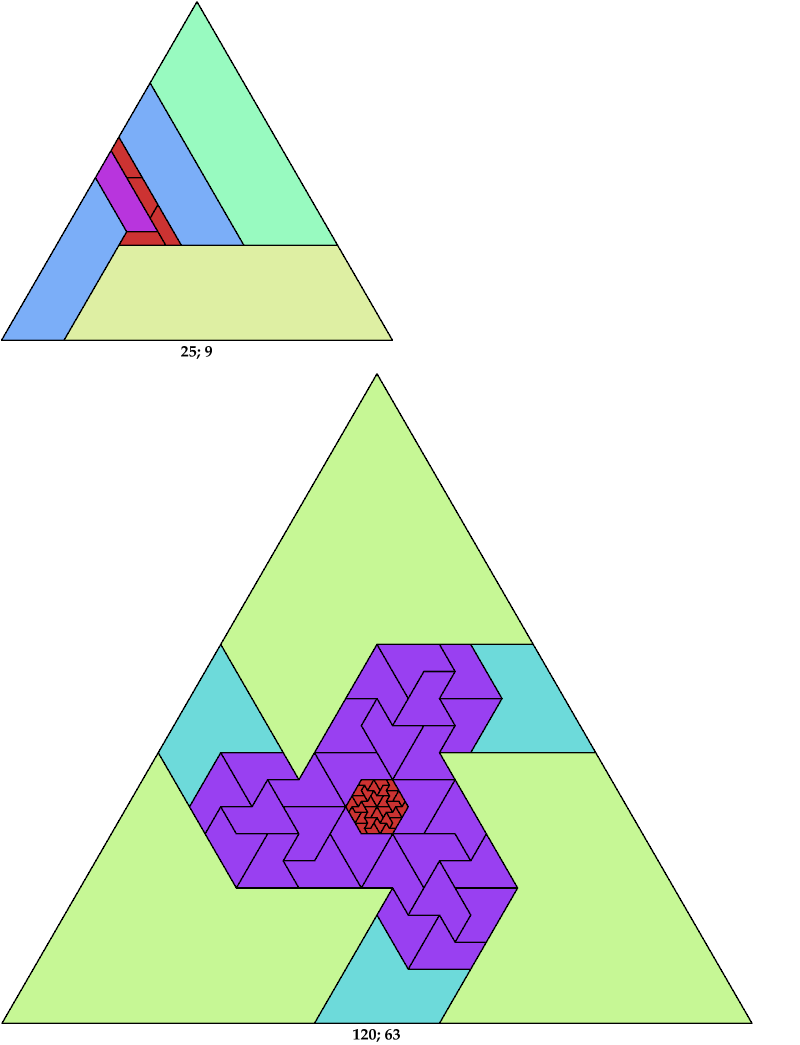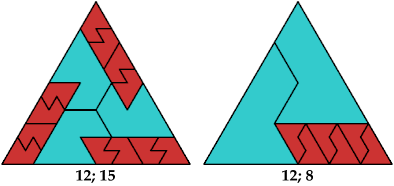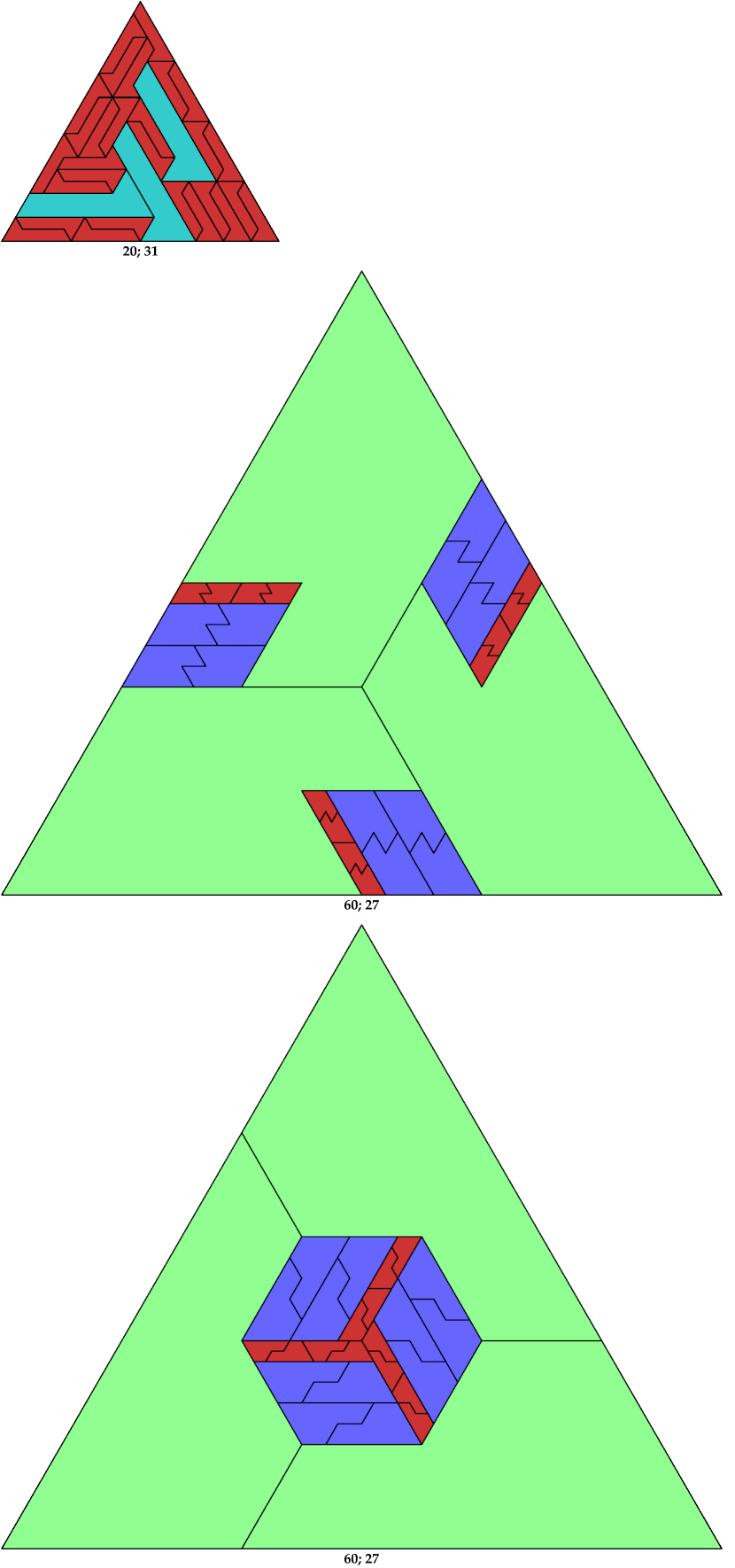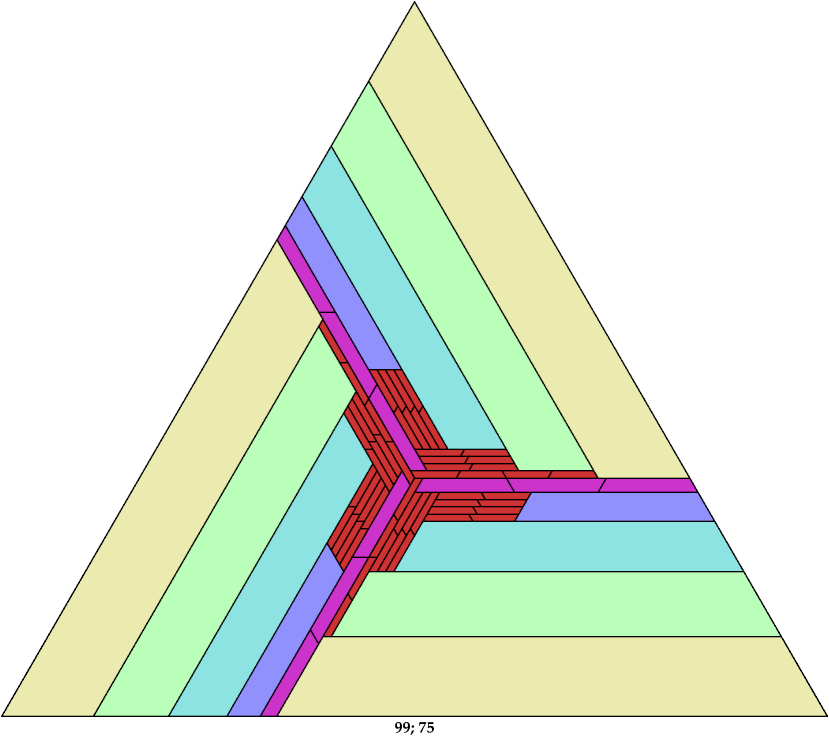
Tilings found by Carl Schwenke and Johann Schwenke are marked with §.
Here I show the solution with the fewest known tiles for each polyiamond. In the figures below, the numbers are the side of the triangle and the number of tiles used.
See also Tiling a Triangle with a Polyiamond.

Scaled copies of the straight heptiamond may be stacked to form a bigger trapezium (trapezoid, in Canada and the U.S.):

Stack the tiles thus till the longer base of the trapezium is at least twice as long as the shorter base. In the stack on the right, the longer base has length 64 and the shorter base has length 27. This satisfies the condition.
Now join a parallelogram to one end of the trapezium so that the short base becomes equal to the slant height:

The parallelogram in the diagram has dimensions 10 × 37. Two straight heptiamonds can form a parallelogram with dimensions 2 × 7. If we scale up the tiling shown above, such 2 × 7 parallelograms can tile the yellow parallelogram.
The padded tiling forms a triamond. Arrange three copies of this triamond tiling to form a triangle:

This method applies to any trapezial polyiamond, whether or not its slant height is 1.
Mike Reid stated that any straight polyiamond with an odd number of cells can tile a triangle, even without being scaled. He is not known to have published a proof.











Last revised 2025-11-24.